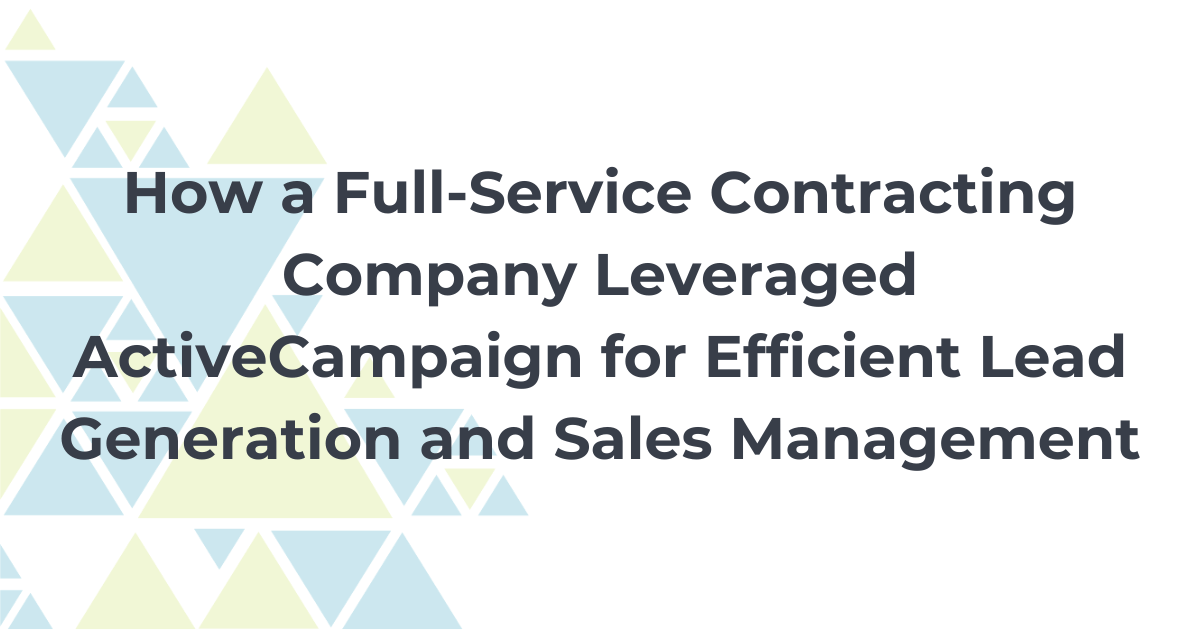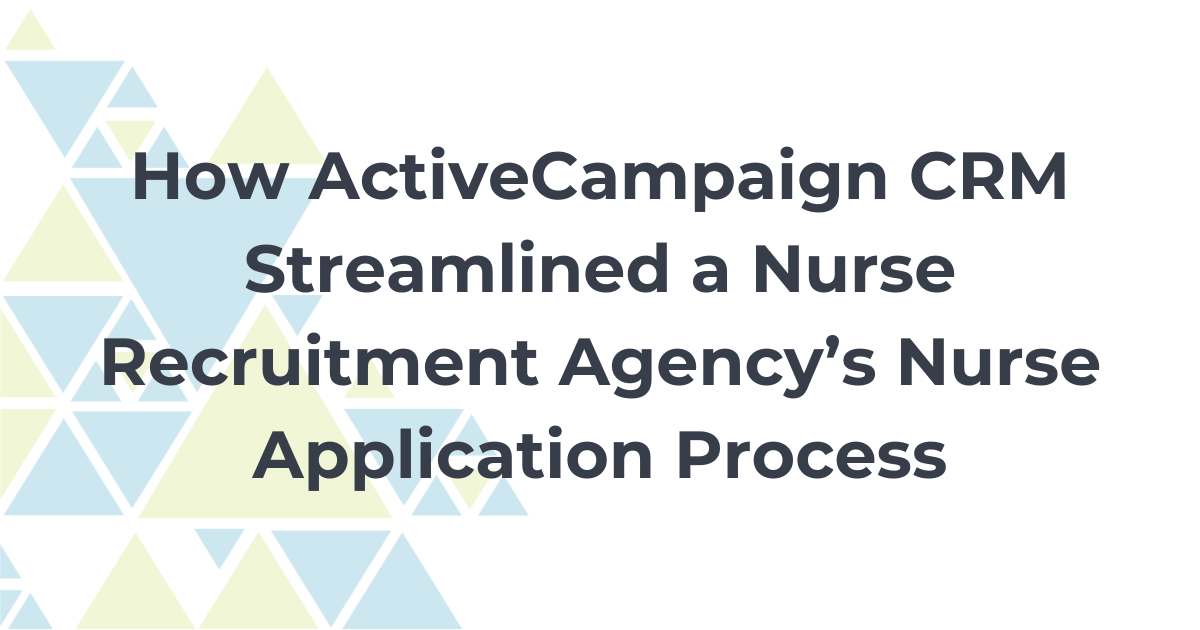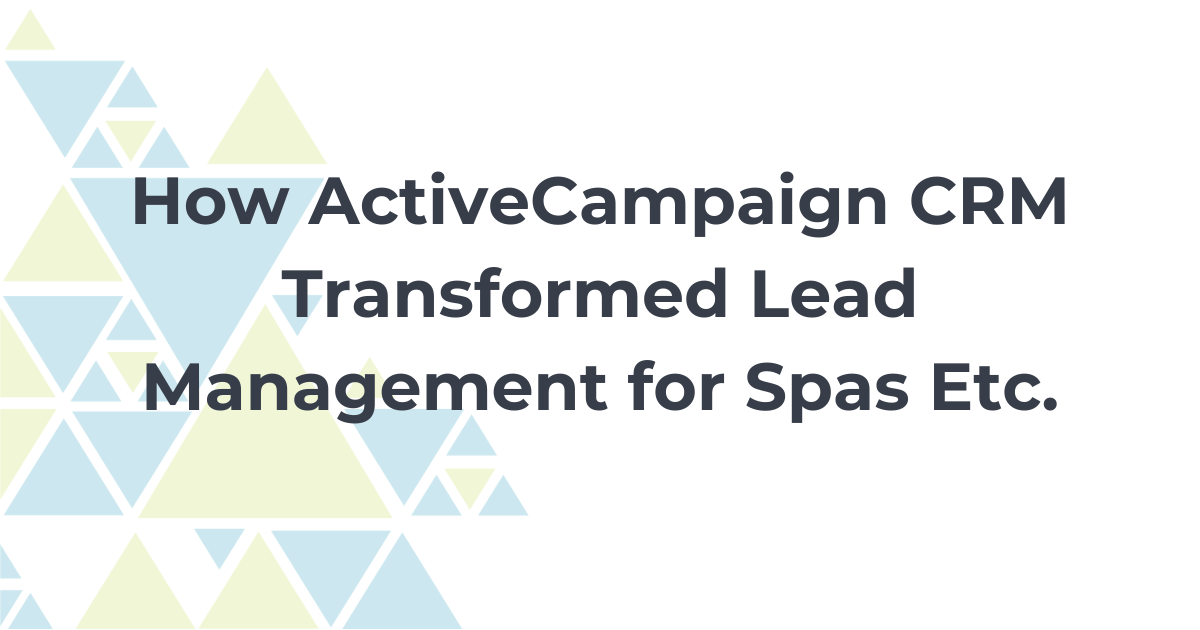In today’s digitally connected world, email marketing has become a cornerstone for businesses of all sizes. From small startups to large corporations, the need to reach customers through their inboxes has never been more vital. With the right email marketing platform, businesses can create personalized campaigns, automate their marketing efforts, and achieve higher engagement rates.
ActiveCampaign: A Leader in the Field
ActiveCampaign has emerged as a leading player in the email marketing landscape. Offering advanced features such as automation workflows, drag-and-drop editors, and landing pages, it has become a go-to solution for many marketers. But as with any tool, it may only fit some perfectly.
Exploring ActiveCampaign Competitors
That’s where ActiveCampaign competitors come into play. Whether you’re looking for more affordable pricing, different features like unlimited contacts, or a free plan that fits your budget, an alternative may suit your needs. This article will explore some of the best ActiveCampaign alternatives, diving into their key features, pricing structures, and how they compare to ActiveCampaign.
What to Expect in This Guide:
- Understanding Email Marketing Platforms: A look at what email marketing platforms offer and why they’re essential for modern businesses.
- Comparing ActiveCampaign Competitors: An in-depth review of top competitors, including ConvertKit, MailChimp, and Brevo.
- Choosing the Right Platform: Guidance on selecting the platform that aligns with your email marketing goals and business needs.
- Additional Tools and Features: Explore supplementary features like web push notifications, HTML editors, and transactional emails that can enhance your email marketing efforts.
Whether you’re a small business owner looking to grow your email list or an eCommerce marketer seeking to deliver targeted content, understanding the landscape of ActiveCampaign competitors is crucial. In the following sections, we’ll delve into the details, providing valuable insights to help you make an informed decision. So, buckle up and get ready to explore the world of email marketing automation like never before!
Understanding Email Marketing Platforms
The Power of Email Marketing
In an age where digital communication reigns supreme, email marketing is a timeless and effective way to connect with audiences. It’s more than just sending emails; it’s about building relationships, driving engagement, and converting leads into loyal customers.
What Are Email Marketing Platforms?
Email marketing platforms are specialized tools designed to help businesses and marketers create, send, and analyze email campaigns. They offer a range of features beyond basic email sending, transforming simple messages into powerful marketing tools.
Email Marketing Automation
Automation is at the heart of modern email marketing. Automation features allow you to set up triggers and actions that send targeted messages based on user behavior, preferences, or other specific criteria. It’s like having a dedicated marketing team working around the clock.
Drag and Drop Editors
Creating visually appealing emails has always been challenging. With drag and drop editors, even those without technical skills can design professional-looking emails. From pre-built templates to custom designs, the possibilities are endless.
Landing Pages and Signup Forms
Capturing leads is a crucial part of any marketing strategy. Email marketing platforms often include tools for creating landing pages and signup forms, allowing businesses to grow their email lists and engage with potential customers.
Advanced Segmentation and Personalization
Segmenting your audience and personalizing content ensures that the right message reaches the right person at the right time. Whether it’s sending promotional campaigns to frequent shoppers or welcome emails to new subscribers, segmentation and personalization make your emails more relevant and engaging.
Comparing to ActiveCampaign
ActiveCampaign has set a high standard in the email marketing industry with its comprehensive suite of features. It offers everything a marketer needs, from automation workflows to responsive email templates. But how do other platforms stack up?
- Email Marketing Efforts: How do other platforms support and enhance email marketing efforts compared to ActiveCampaign?
- Bulk SMS Marketing Campaigns: What options exist for integrating SMS messages into your marketing campaigns?
- All-in-One Platform Considerations: Are there alternatives that offer an all-in-one solution, including marketing automation software, landing page builders, and more?
Understanding email marketing platforms is the first step in selecting the one that fits your needs. Knowing what’s out there is essential whether you’re looking for advanced features, unlimited contacts, or a free plan. In the next section, we’ll dive into specific ActiveCampaign competitors, exploring how they compare and what they offer.
ActiveCampaign Alternatives
The world of email marketing is vast and filled with options. While ActiveCampaign has made a name for itself with its robust features and user-friendly interface, many other platforms are worth considering. In this section, we’ll explore some of the top competitors and alternatives to ActiveCampaign, delving into what they offer and how they compare.
ConvertKit
Overview and Key Features
ConvertKit is known for its simplicity and effectiveness, especially for bloggers and content creators. Here’s what sets it apart:
- Email Marketing Automation: Create custom reports and automated workflows with ease.
- Landing Page Builder: Design beautiful landing pages without any coding knowledge.
- Free Plan Available: Get started without upfront costs of up to 1,000 contacts.
ConvertKit Compared to ActiveCampaign
- Ease of Use: Often praised for its user-friendly interface, ConvertKit may be a good ActiveCampaign alternative for those looking for a more straightforward experience.
- Pricing: ConvertKit offers competitive pricing, with various plans to suit different needs.
- Customer Support: Known for responsive customer support, ConvertKit ensures users have the help they need.
MailChimp
Overview and Key Features
MailChimp is a powerhouse in the email marketing world, offering a wide range of features:
- Drag and Drop Builder: Create stunning emails with a simple drag-and-drop system.
- E-commerce Features: Integrate with online stores and leverage sales automation features.
- Generous Free Plan: An excellent option for small businesses or those just starting up to 2,000 contacts.
MailChimp Compared to ActiveCampaign
- RSS Feeds: MailChimp offers one of the most robust RSS feed to email builders today.
- Integration Options: With many integrations, MailChimp can fit seamlessly into your existing tech stack.
- Personalized Onboarding: Get started quick and easily with personalized onboarding sessions with the support team.
Brevo
Overview and Key Features
Brevo, formally Sendinblue, is a newer player in the field but has quickly gained traction with its unique offerings:
- Unlimited Contacts: All plans offer unlimited contacts, including the free plan!
- Pre-Built Workflow Templates: Get started quickly with ready-made automation templates.
- Affordable Pricing: Brevo offers cost-effective solutions for businesses of all sizes.
Brevo Compared to ActiveCampaign
- Capped Sending: Unlike ActiveCampaign, Brevo plans are based on the number of emails you send. So while you can have as many contacts as you wish, you can only send as many emails as your plan allows.
- Real-Time Reporting: Gain valuable insights with Brevo’s comprehensive reporting tools.
- Learning Curve: Brevo’s intuitive design makes it accessible, even for those new to email marketing.
How to Find the Best ActiveCampaign Alternatives
Choosing the right email marketing platform is a decision that can significantly impact your marketing efforts. By exploring these ActiveCampaign competitors, you can find the one that aligns with your goals, budget, and preferences. Whether you prioritize automation features, drag and drop editors, or unlimited contacts, there’s a platform for you.
In the next section, we’ll dive deeper into a side-by-side comparison, providing a clear picture of how these platforms stack against each other and ActiveCampaign.
A Detailed Breakdown of ActiveCampaign and Its Top Competitors
Choosing an email marketing platform is no small task. With so many features, pricing options, and other considerations, it can be overwhelming to find the perfect fit. In this section, we’ll compare ActiveCampaign, ConvertKit, MailChimp, and Brevo, breaking down the key aspects to help you make an informed decision.
Email Marketing Automation
- ActiveCampaign: Known for its advanced automation workflows, allowing for complex and targeted campaigns.
- ConvertKit: Offers user-friendly automation with custom reporting capabilities.
- MailChimp: Robust automation with eCommerce integrations and dynamic segmentation.
- Brevo: Simplified automation with pre-built workflow templates for quick setup.
Drag and Drop Editors
- ActiveCampaign: Intuitive drag and drop editor with responsive email templates.
- ConvertKit: Simplified design experience with a focus on content creators.
- MailChimp: Feature-rich editor with content blocks and customization options.
- Brevo: Easy-to-use editor with a focus on clean and modern designs.
Pricing and Free Plans
- ActiveCampaign: Various plans are available, starting with a Lite plan for beginners.
- ConvertKit: Free plan available with affordable upgrades as you grow.
- MailChimp: Generous free plan with options for small businesses and enterprises.
- Brevo: Cost-effective pricing with unlimited monthly emails on all plans.
Landing Pages and Signup Forms
- ActiveCampaign: Comprehensive landing page builder with advanced features.
- ConvertKit: User-friendly landing page design with no coding required.
- MailChimp: Integration with online stores and sales automation features.
- Brevo: Quick setup with pre-built templates and custom domains.
Customer Support and User Experience
- ActiveCampaign: Dedicated account manager and extensive knowledge base.
- ConvertKit: Responsive support with a focus on user-friendly interface.
- MailChimp: 24/7 chat support and mobile app for on-the-go management.
Brevo: Intuitive design with real-time reporting and learning resources.
Making the Right Choice
The world of ActiveCampaign competitors is rich and diverse, offering something for every business and marketing need. By understanding the detailed comparisons, you can find the platform that aligns with your goals, whether it’s advanced analytics, unlimited emails, or a forever free plan. The choice is yours, and the options are plentiful.
Choosing the Right Platform for Your Needs
Selecting an email marketing platform is more than just comparing features and prices. It’s about finding the solution that aligns with your business needs, goals, and audience.
In this section, we’ll explore the considerations to remember when choosing the right platform for you, whether you’re a small business owner, an eCommerce marketer, or someone in between.
Understanding Your Audience
- Segmentation and Targeting: Choose a platform that allows for advanced segmentation, enabling you to send personalized campaigns to different audience segments.
- Mobile Users Consideration: Consider how the platform caters to mobile users, as many emails are read on mobile devices.
Aligning with Business Goals
- Lead Generation and Conversion: If generating leads and converting them into customers is a priority, look for platforms with robust landing page builders and signup forms.
- Ecommerce Integration: Integration with online stores and sales automation features can be crucial for eCommerce businesses.
Budget and Pricing Considerations
- Free Plans and Trials: If budget is a concern, explore platforms that offer free plans or trials to test the waters.
- Scalability: Consider how the platform’s pricing scales with your business growth, ensuring it remains cost-effective as you expand.
Features and Functionality
- Automation Features: Evaluate the automation capabilities, especially if you want to create complex workflows and automated sequences.
- Drag and Drop Builder: If ease of design is essential, look for platforms with intuitive drag and drop editors.
- SMS Marketing Integration: Platforms with SMS features can be valuable for those looking to incorporate SMS into their marketing.
Support and Learning Curve
- Customer Support: Assess the level of customer support offered, including chat support, knowledge base, and responsiveness.
Ease of Use: Consider the learning curve and how user-friendly the platform is, especially if you’re new to email marketing.
Your Perfect Platform Awaits
Choosing the right email marketing platform is a personalized journey. By understanding your audience, aligning with your business goals, considering budget constraints, and evaluating features and support, you can find the tailor-made platform for you. Whether it’s ActiveCampaign, ConvertKit, MailChimp, Brevo, or another option, the perfect platform is ready to elevate your email marketing to new heights.
In the final section, we’ll explore additional tools and features that can further enhance your marketing efforts, providing even more ways to connect and engage with your audience.
Additional Tools and Features
Email marketing is a dynamic and ever-evolving field. While the core functionalities of sending emails, automating campaigns, and building landing pages are essential, a world of additional tools and features can take your marketing to the next level. In this section we’ll explore some of these supplementary offerings, from web push notifications to transactional emails.
Web Push Notifications
- What Are They? Web push notifications are messages that pop up on a user’s desktop or mobile device, even when the browser is closed.
- Why Use Them? They can enhance engagement, retarget visitors, and provide real-time updates.
- Platforms Offering This Feature: Many email marketing platforms, including ActiveCampaign, integrate with web push notification services.
HTML Editor
- What Is It? An HTML editor allows direct editing of the HTML code, providing more control over email design.
- Why Use It? For those with coding skills, it offers the ability to create truly unique and customized emails.
- Platforms Offering This Feature: ConvertKit and others provide HTML editing capabilities.
Transactional Emails
- What Are They? Transactional emails are automated, triggered emails, such as order confirmations or password resets.
- Why Use Them? They enhance customer experience by providing timely and relevant information.
- Platforms Offering This Feature: ActiveCampaign and others offer transactional email functionalities.
Constant Contact and SMS Messages
- What Is It? Constant contact refers to maintaining regular customer communication, while SMS messages allow for marketing via text messages.
- Why Use Them? They provide additional channels to reach and engage with your audience.
- Platforms Offering This Feature: Many platforms, including MailChimp, offer SMS marketing integrations.
Ecommerce Features and Sales Automation
- What Are They? Ecommerce features include integrations with online stores, cart abandonment campaigns, and more. Sales automation streamlines the sales process through automated workflows.
- Why Use Them? They help drive sales, nurture leads, and enhance the shopping experience.
- Platforms Offering This Feature: Brevo and others offer extensive eCommerce and sales automation tools.
The world of email marketing is rich and diverse, offering more than just the ability to send emails. You can create a more engaging, personalized, and effective marketing strategy by exploring and leveraging these additional tools and features. The possibilities are endless, whether delivering targeted content through web push notifications or enhancing the shopping experience with eCommerce features.
With this comprehensive guide, you now have the insights and knowledge to explore the best ActiveCampaign competitors, choose the platform that aligns with your needs, and utilize the full spectrum of tools available. Happy hunting, and here’s to your email marketing success!
Navigating the World of Email Marketing
The journey through the landscape of email marketing platforms, ActiveCampaign competitors, and the myriad of tools and features available has been comprehensive and enlightening. In a world where digital communication is paramount, finding the right platform to connect with your audience is more than a choice; it’s a strategic decision that can shape the success of your marketing efforts.
From understanding the power of email marketing automation to exploring alternatives like ConvertKit, MailChimp, and Brevo, this guide has provided insights and comparisons to help you make an informed decision. Whether you’re a small business looking for a free plan, an eCommerce marketer seeking advanced segmentation, or a content creator needing an intuitive drag and drop builder, the perfect platform awaits.
Key Takeaways
- Understanding Your Needs: Assessing your audience, goals, and budget is the first step in choosing the right platform.
- Exploring Alternatives: ActiveCampaign is robust, but competitors offer unique features and pricing structures worth considering.
- Leveraging Additional Tools: From web push notifications to transactional emails, embracing additional tools can enhance your marketing strategy.
- Making the Right Choice: With careful consideration and a clear understanding of what’s available, you can find the tailor-made platform for your needs.
Email marketing is an ever-evolving field with opportunities to engage, connect, and convert. With this guide, you’re now equipped to navigate the world of email marketing platforms, find the best ActiveCampaign competitors, and utilize all the advanced features and tools.
Here’s to your success in email marketing, and may your campaigns resonate, engage, and thrive in the inboxes of your audience. Happy emailing!
Official Platform Websites and Blogs
- ActiveCampaign: Explore tutorials, webinars, and blog posts to maximize ActiveCampaign’s features.
- ConvertKit: Access guides, community forums, and more to enhance your ConvertKit experience.
- MailChimp: Dive into MailChimp’s extensive knowledge base, tutorials, and marketing tips.
- Brevo: Learn about Brevo’s unique offerings through its guides, FAQs, and customer support.



